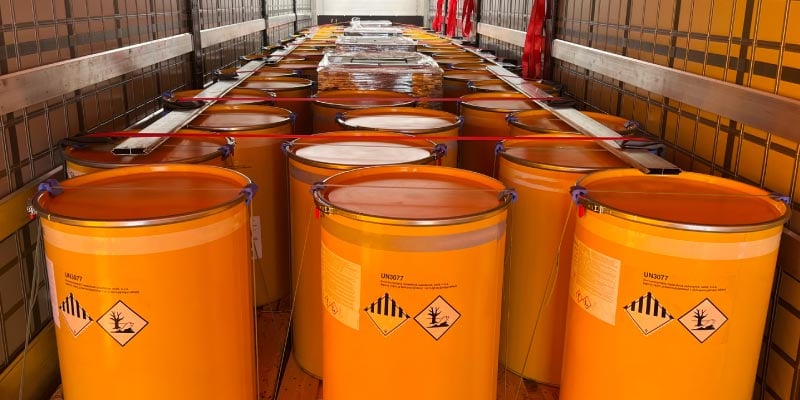6 Things to Know About Hazardous Waste (and Why They Matter)
November 20, 2023

Managing hazardous waste is usually more complicated than most generators realize, and the cost of errors can be steep. Nonetheless, there are multiple benefits that you can accrue by managing hazardous waste wisely—you just have to know what they are and how to take advantage of them.
Here are six things hazardous waste generators need to understand about hazardous waste to lower their risk and open the door to opportunities:
1. Hazardous waste is highly regulated.
The hazardous waste industry is second only to nuclear power in terms of regulatory complexity. The Environmental Protection Agency, as well as state and local authorities, have numerous requirements in place that hazardous waste generators must meet. These include proper identification and handling, labeling, storage and transportation. Generators must also develop and provide contingency plans, notifications and reports. Non-compliance can be expensive. Fines and penalties, lawsuits, cleanup and remediation fees, and a number of other charges can easily pile up to thousands, or even millions, in costs. Increased oversight, license suspensions and revocations add to the burden and make getting back on track difficult to nearly impossible.
2. Hazardous waste can be difficult to identify.
It’s crucial to recognize and understand all the subtleties surrounding the hazardous waste that your business generates. This includes determining which materials are actually considered hazardous waste according to established regulations, primarily those outlined in the U.S. Resource Conservation and Recovery Act (RCRA). And despite the descriptions included in these regulations, hazardous waste can still be difficult to identify because there are numerous variables, nuances and industry terms that can easily perplex a generator whose business is removed from that area of expertise or who doesn't have the resources to employ in-house experts.
3. Hazardous waste can be costly and time-consuming to manage.
Middle market companies often try to manage their hazardous waste internally by coordinating multiple vendors—one for each waste stream. This can lead to increased administrative costs and complexity. What’s more, meeting regulatory requirements can quickly consume staff time and resources. Expenses include an investment in proper infrastructure, personnel, training, administrative paperwork and the continuous monitoring of the regulatory environment.
4. Hazardous waste increases workplace risk.
Working with hazardous waste requires specialized expertise, such as the ability to interpret safety data sheets (SDSs) and understand safe handling techniques, labeling and communication requirements. Improper handling can create an unsafe workspace and potentially endanger the surrounding environment and community, resulting in fines or litigation.
5. Hazardous waste is a brand liability.
Corporate environmental, social and governance (ESG) responsibility is important to a significant portion of stakeholders. Being perceived as irresponsible with waste—especially waste that is hazardous—can lead to major blowback from regulators, litigators, partners, investors and consumers. It can easily result in fines, litigation, loss of business or even suspensions and closures. And even if you are meeting the minimal requirements, your reputation could suffer if you’re deemed to be making a weak sustainability effort.
6. Hazardous waste can be treated and used to create value.
The proper treatment of hazardous waste leverages various techniques to render it safe for recycling so that resources, such as metals, plastics, papers, water and more can remain within the value chain and be used as inputs for other processes, create new revenue streams, or in the case of water, be returned to nature. Once all recycling options have been exhausted, it may be possible to process the treated waste into a low-carbon fuel ideal for cement kilns and power plants through a process called “fuel blending”.
Generating hazardous waste creates a lot of risk, but if it’s handled properly, it can create opportunities as well. For most organizations, the best approach to managing hazardous waste is to delegate that responsibility to a trusted partner. Look for a solution provider that can provide hazardous waste disposal as part of a holistic and interconnected waste management portfolio. A best-in-class partner should be able to synergize the expert management of hazardous waste with other solutions to optimize performance. The result should be a cost-effective and efficient waste management system that reaps benefits for your organization in terms of safety, simplicity and sustainability.
To learn more about tailored hazardous waste management solutions, read our e-book, Hazardous Waste: Regulations, Risks and Recycling Opportunities.